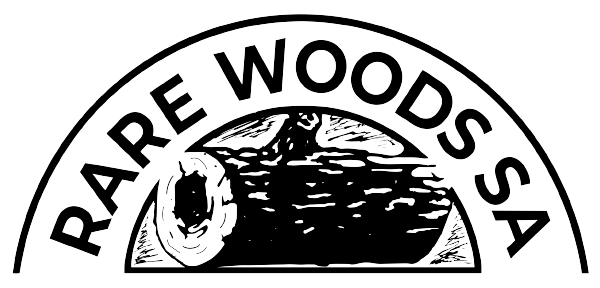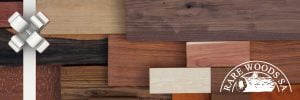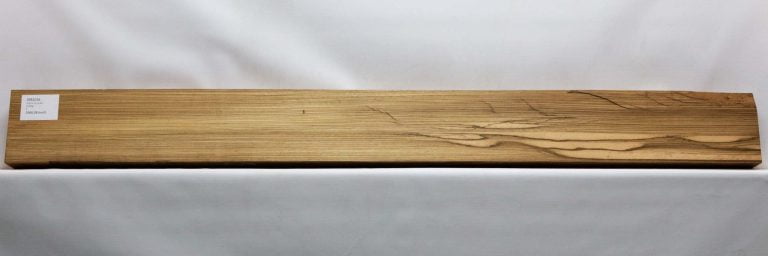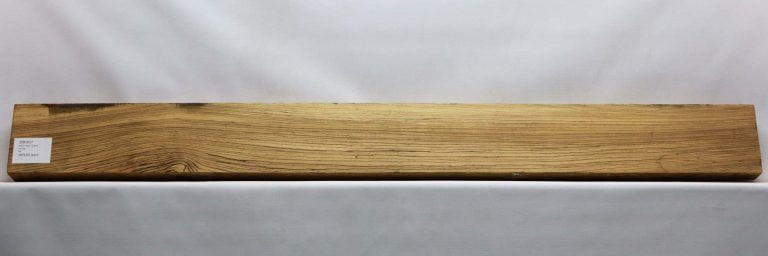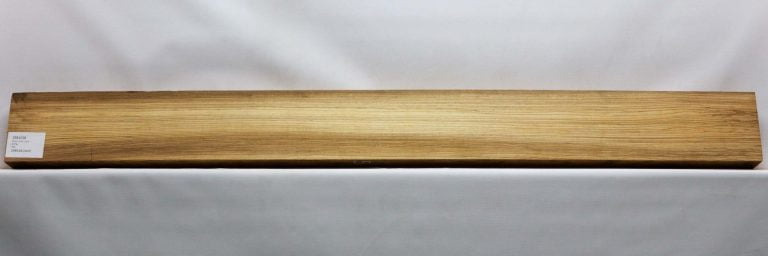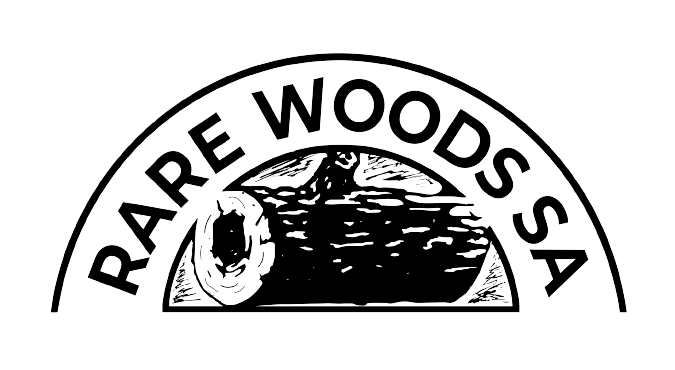Zebrano
Quick Look
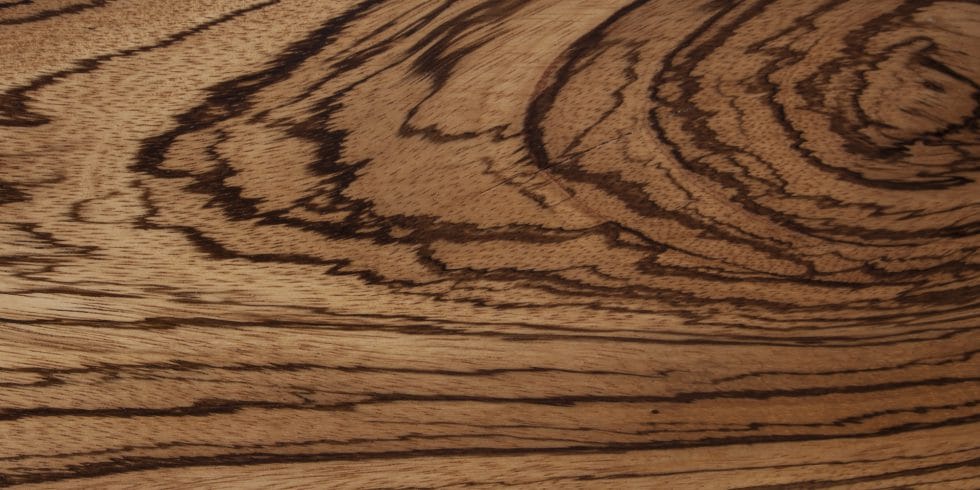
Zebrawood is a tough, durable, visually striking West African wood whose heartwood base color — which can range from tan to a dull pale yellow, to a muted off-white / almost gray hue, depending on specific region and conditions of growth — is decorated by dark brown striping of varying degrees (ranging to almost black), hence its name. The striping is typically long and fairly uniform when the wood is quartersawn, but wavy and erratic when flatsawn.¬† Sapwood is easily distinguishable (by its lack of striping, naturally) and is usually a light, pale white color.
Its coarse, open-poured texture combined with its wavy and/or interlocked grain patterns can make planing a challenge. (as well as finishing, if filling all surface pores is requisite.) For any sort of resawing or surfacing, blades and cutting tools should be at their sharpest to minimize tear-out.  The wood glues well and usually possesses a pleasant, moderate to high luster, which can make for impressive finishing.
While flatsawn lumber can yield some quite dramatic aesthetic results, quartersawn lumber provides maximum (and sometimes much needed) stability. The species is known to be difficult to dry, with pieces sometimes warping during the kiln drying process. Tiny pockets of small void areas, also, are not uncommon along the darker striped areas — especially among flatsawn boards.
Zebrawood’s trademark aesthetics have made it very popular with veneer mills around the world. However, great care is required when handling, to avoid it cracking. The wood’s popularity keeps it in steady demand, which makes it moderately expensive in spite of a generally steady supply in the US. While its demand is based almost exclusively on its aesthetic appeal, Zebrawood is a strong, stiff lumber, once dry.
This species is not listed in the CITES Appendices, but is classified as “Vulnerable” on the IUCN Red List of Threatened Species.
Why We Love This Wood
We just can't get enough of the gorgeous patterns found in Zebrano. We can't decide whether we prefer the consistent, stripy quartersawn pattern or the wild, wavy flatsawn pattern.
Quick Look

Vital Statistics
| Main Color Group | Variegated |
| Grain Pattern | Pronounced |
| Avg Dry Weight - LB/FT3 | 50 |
| Avg Dry Weight - KG/M3 | 805 |
| Janka Hardness - LBF | 1830 |
| Janka Hardness - N | 8160 |
A Popular Choice in
Search With Filters
R1,219.46
R1,038.15
R1,279.62
R1,028.74
Other Species
Durable and relatively affordable, European Chestnut is a popular cladding species in Europe. With looks similar to Oak and Ash, we are sure you will love the appearance of Sweet Chestnut. Grain can be interlocked, but Chestnut is still relatively easy to work. It can split relatively easily, so pre-drilling is essential.
This is a new species for us here at Rare Woods and a first for South Africa. We are delighted with what arrived and can’t wait to get it into some of your projects.
Detail
Common Uses
Available in a range of thicknesses and grades, Birch Plywood is a wonderful, high-end board product used in the production of cabinets, furniture and more. With a consistent layer thicknesses, a thick veneer face and all voids patched, Birch Plywood is visually appealing on face grain and end grain, structurally sound and stable in use (indoor application only).
Our Birch Plywood comes from Eastern Europe and we stock both S/BB and BB/BB grades with thicknesses ranging from 6.5mm to 21mm in standard sheet dimensions of 2.45mx1.22m
Grade Summary:
S/BB: Better face clear – may have occasional patch. Second face is BB grade.
BB/BB: both faces are grade BB. Can be up to 29 patches, a side, but typically 3-6 patches a side.
boxes, cabinetry, carpentry, construction
Detail
Common Uses
Longhi is an African wood with similar working properties to its more well-known cousin, Anegre. Its color varies from a greyish-white to beige to pinkish-brown color, which slightly darkens with age and UV-ray exposure. Its generally light appearance makes sapwood difficult to distinguish. Its grains are typical straight (though occasionally interlocked) and its texture ranges between fine and medium-fine. It can sometimes possess mottled or subtle tiger-striped figuring.
The wood must be carefully dried, as it is susceptible to fungus. It is considered to be moderately durable, and moderately stable. Longhi has a solid strength-to-weight ratio, which makes it a popular choice for flooring and decking.
cabinetry, decking, flooring, furniture
Detail
Common Uses
“Roasting” Flame Birch involves gradually heating the wood up to temperatures of greater than 160 degrees celcius in special heat chambers made of stainless steel under anoxic conditions. The heat removes organic compounds from the wood cells, changing both the physical and chemical make-up of the wood. The process is natural and chemical free. It darkens the wood to a beautiful rich chocolatey brown color whilst still showing the gorgeous grain and figure of the underlying wood.
The thermally modified wood is more dimensionally stable, but the process does reduce bending strength and make the wood a little more brittle. This makes it chip a little easier than the un-modified lumber. The brittleness makes it less suitable for intricate cabinetry, but it is still an excellent choice for less intricate items such as floors, tops, panels, cladding etc.
Extra care needs to be taken when finishing thermally modified wood, as the “bone dry” wood has a tendency to “suck in” much of what is given to it. Our in-house woodworking specialist has had excellent results with Osmo PolyX. He suggests a thicker finish will work better.
flooring, interior panelling
Detail
Common Uses
This Malaysian species is a medium weight timber suitable for light structural purposes. It is a popular joinery timber and it machines easily and finishes well.
furniture, joinery
Detail
Common Uses
Indigenous to the tropical regions of East Africa and West Africa, as far south as Angola.¬† Anegre has been used primarily as an interior wood; it is decidedly non-durable, and thus not recommended for outdoor applications. The wood’s aesthetics can vary greatly, as Anegre is comprised of three separate species within the Pouteria genus. Its colors can range from pale yellowish to orangish-brown wood, to a pale pinkish-brown, sometimes with additional highlight coloration. Anegre typically darkens to a golden-to reddish brown over time, with repeated UV ray exposure. The heartwood and sapwood of Anegre are usually not distinguishable from each other.
Anegre has a medium texture with closed pores similar to Maple.  The species is easy to work with both hand and power tools.
Examples can be quite beautiful — and sometimes stunning, with curly and mottled figuring being not uncommon. Its hues tend to be generally pastel in nature, so it makes a very complimentary, aesthetically unimposing wood for a variety of interior applications. Grains are typically straight but can occasionally be interlocked. Its texture is medium and it has a nice natural luster.
boatbuilding, cabinetry, carpentry, construction, veneer
